INSTITUT SUPERIEUR D'ANTHROPOLOGIE
INSTITUTE OF ANTHROPOLOGY
ONLINE COURSES / COURS A DISTANCE
WINTER TERM : JANUARY 2016
REGISTER NOW
ROYAUME UNI – 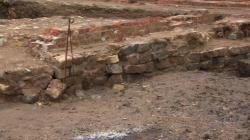 Gloucester - A "huge" Norman castle wall has been discovered during the redevelopment of the former Gloucester prison. Archaeologist Neil Holbrook said the "massive structure" was found beneath the redundant jail's exercise yard. He said the "huge tower keep" was built in the early 12th Century and would have been a "major landscape feature". He said the castle was demolished in 1787 and the walls had "never been seen in the last 200 years".
Gloucester - A "huge" Norman castle wall has been discovered during the redevelopment of the former Gloucester prison. Archaeologist Neil Holbrook said the "massive structure" was found beneath the redundant jail's exercise yard. He said the "huge tower keep" was built in the early 12th Century and would have been a "major landscape feature". He said the castle was demolished in 1787 and the walls had "never been seen in the last 200 years".
http://www.bbc.com/news/uk-england-gloucestershire-35031536
ROYAUME UNI –  Christchurch - A yeam of archaeologists have been able to recreate a sunken warship following 'incredible footage' from the diving trip. Volunteers and divers of the Maritime Archaeology Trust have made a 3D digital model of the World War One shipwreck, the John Mitchell, which sunk of the Dorset coast.It was mine-sweeping when it hit another vessel and sank in November 1917, with no loss of life to the crew. Now the wreck of the 85 foot (25m) long wooden, steam-powered fishing boat lies at a depth of 40m (131 ft) about 15 miles south of Christchurch. Hundred of photos and hours of footage were captured during the unusually clear waters in June when divers swam down to see the ship first hand.To see the model visit the Forgotten Wrecks site
Christchurch - A yeam of archaeologists have been able to recreate a sunken warship following 'incredible footage' from the diving trip. Volunteers and divers of the Maritime Archaeology Trust have made a 3D digital model of the World War One shipwreck, the John Mitchell, which sunk of the Dorset coast.It was mine-sweeping when it hit another vessel and sank in November 1917, with no loss of life to the crew. Now the wreck of the 85 foot (25m) long wooden, steam-powered fishing boat lies at a depth of 40m (131 ft) about 15 miles south of Christchurch. Hundred of photos and hours of footage were captured during the unusually clear waters in June when divers swam down to see the ship first hand.To see the model visit the Forgotten Wrecks site
http://www.bournemouthecho.co.uk/news/14128949.WATCH__the_incredible_3D_reconstruction_of_Christchurch_s_sunken_warship/
INDE – 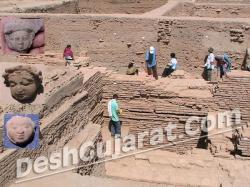 Vadnagar - The Archaeological Survey of India will on Tuesday resume excavation in Prime Minister Narendra Modi's hometown Vadnagar, apparently to find evidence on existence of Buddhist monasteries in ancient time in the area. "Last year's excavations at Vadnagar had thrown new light on ancient trade and commerce that was in existence at Vadnagar as well as the nature of the ancient city found here," the ASI stated in a release on Monday. The earlier excavation was able to find links pointing to the relationship between Vadnagar and Europe through West Asia. "The ASI had been able to get two C14 dates from excavated localities at Vadnagar, setting the antiquity of these findings to the first century CE The ASI had begun digging on January 5 to corroborate nearly 1400-year-old account of Chinese traveller Hiuen Tsang who had mentioned existence of nearly 10 Buddhist monasteries in the area at that time. The initial discoveries had indicated that one or more Buddhist monasteries could indeed have flourished at the site.
Vadnagar - The Archaeological Survey of India will on Tuesday resume excavation in Prime Minister Narendra Modi's hometown Vadnagar, apparently to find evidence on existence of Buddhist monasteries in ancient time in the area. "Last year's excavations at Vadnagar had thrown new light on ancient trade and commerce that was in existence at Vadnagar as well as the nature of the ancient city found here," the ASI stated in a release on Monday. The earlier excavation was able to find links pointing to the relationship between Vadnagar and Europe through West Asia. "The ASI had been able to get two C14 dates from excavated localities at Vadnagar, setting the antiquity of these findings to the first century CE The ASI had begun digging on January 5 to corroborate nearly 1400-year-old account of Chinese traveller Hiuen Tsang who had mentioned existence of nearly 10 Buddhist monasteries in the area at that time. The initial discoveries had indicated that one or more Buddhist monasteries could indeed have flourished at the site.
http://zeenews.india.com/news/gujarat/did-buddhist-monasteries-exist-in-vadnagar-asi-to-begin-finding-out-today_1831804.html
USA – 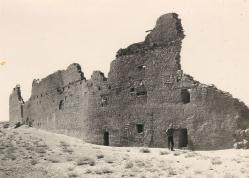 Chaco Canyon - Researchers at the University of Arizona have found a new source for the beams used to build the ancient pueblos of Chaco Canyon, using tree-ring samples that date to the founding of the science of dendrochronology. Archaeologists estimate that it took 240,000 trees to build the complex of pueblos in Chaco Canyon between 850 and 1250 A.D. Previous studies at the UA Laboratory of Tree Ring Research had determined that many of the beams used to build the stone, mud and wood city in northeastern New Mexico came from the Chuska Mountains, 50 miles to the west. Research published Monday in the Proceedings of the National Academy of Science shows that some of the earliest wood beams came instead from the Zuni Mountains, about 50 miles south of Chaco Canyon.
Chaco Canyon - Researchers at the University of Arizona have found a new source for the beams used to build the ancient pueblos of Chaco Canyon, using tree-ring samples that date to the founding of the science of dendrochronology. Archaeologists estimate that it took 240,000 trees to build the complex of pueblos in Chaco Canyon between 850 and 1250 A.D. Previous studies at the UA Laboratory of Tree Ring Research had determined that many of the beams used to build the stone, mud and wood city in northeastern New Mexico came from the Chuska Mountains, 50 miles to the west. Research published Monday in the Proceedings of the National Academy of Science shows that some of the earliest wood beams came instead from the Zuni Mountains, about 50 miles south of Chaco Canyon.
http://tucson.com/news/blogs/scientific-bent/new-wood-source-found-for-chaco-canyon/article_ad54fe7b-e590-5d6f-947e-2cb5c0bb84aa.html
TURQUIE – 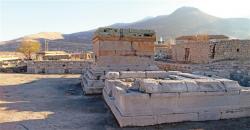 Karaman - Continuing excavations in an extinct volcano in the Central Anatolian province of Karaman have unearthed a unique pyramidal mausoleum and a temple. Karaman Museum Director Abdülbari Yıldız said excavation and cleaning works had been continuing at the Değle and Madenşehri villages in the skirts of Karadağ Mountain since 2014. He said six church structures had been so far unearthed during the excavations, adding, “Excavations recently focused on Madenşehri. We worked in the region called ‘mint’ by locals. As the works progressed, we got very excited. A mausoleum and a temple that had not been seen in the Central Anatolian and Mediterranean regions were found here.” The pyramidal mausoleum and the temple with a podium dated back to the 3rd century, Yıldız said. “The mausoleum and the temple were completely unearthed. Environmental arrangements are being made. These are Roman-era structures. The roof of the two-story mausoleum had collapsed. It is known that Roman Emperor Marcus Aurelius had coins printed in this region. We estimate that this mausoleum belonged to a top Roman official,” he said. “After Christianity became dominant in the region after the 5th century, dozens of churches were built. The region was recognized as the center of episcopalism and pilgrimage. The newly-discovered structures are from the Roman era when Christianity was not popular. Churches have been found in the region but not a temple. We can see such structures on the Aegean coasts. It is very important that it is the only pyramidal mausoleum and temple with a podium ever found in Central Anatolia,” he added.
Karaman - Continuing excavations in an extinct volcano in the Central Anatolian province of Karaman have unearthed a unique pyramidal mausoleum and a temple. Karaman Museum Director Abdülbari Yıldız said excavation and cleaning works had been continuing at the Değle and Madenşehri villages in the skirts of Karadağ Mountain since 2014. He said six church structures had been so far unearthed during the excavations, adding, “Excavations recently focused on Madenşehri. We worked in the region called ‘mint’ by locals. As the works progressed, we got very excited. A mausoleum and a temple that had not been seen in the Central Anatolian and Mediterranean regions were found here.” The pyramidal mausoleum and the temple with a podium dated back to the 3rd century, Yıldız said. “The mausoleum and the temple were completely unearthed. Environmental arrangements are being made. These are Roman-era structures. The roof of the two-story mausoleum had collapsed. It is known that Roman Emperor Marcus Aurelius had coins printed in this region. We estimate that this mausoleum belonged to a top Roman official,” he said. “After Christianity became dominant in the region after the 5th century, dozens of churches were built. The region was recognized as the center of episcopalism and pilgrimage. The newly-discovered structures are from the Roman era when Christianity was not popular. Churches have been found in the region but not a temple. We can see such structures on the Aegean coasts. It is very important that it is the only pyramidal mausoleum and temple with a podium ever found in Central Anatolia,” he added.
http://www.hurriyetdailynews.com/Default.aspx?pageID=238&nid=92201&NewsCatID=375
GRECE – 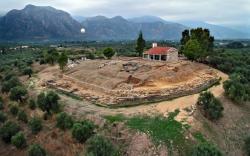 Mycenae - The Athens Archaeological Society has denied recent press reports that archaeologists have discovered part of the throne of Agamemnon, king of Mycenae. In a letter to the Greek culture ministry, the society’s general secretary Vassilis Petrakos, who is also supervising excavations in Mycenae, in the north-eastern Peloponnese, said that claims by fellow archaeologist Christofilis Maggidis, who is field director of the dig, are unfounded. He said that a team of experts had been sent to the site to examine the findings, a 50 kilo slab said to be part of the ancient king’s stone chair, and dating back to the last historical phase of the palace at Mycenae. The team concluded that there was no scientific evidence to back Maggidis's claim. The shape of the finding, the experts said, suggests it was more likely part of a household or craft utensil. The Mycenaean civilization flourished in the late Bronze Age, from the 15th to the 13th century BC. Its influence spread throughout the Peloponnese but also across the Aegean, Crete and the Cycladic islands. Agamemnon was commander-in-chief of the Greeks in the Trojan War, as recounted by Homer. Although a mythical figure, Agamemnon may have been a reflection of an actual king.
Mycenae - The Athens Archaeological Society has denied recent press reports that archaeologists have discovered part of the throne of Agamemnon, king of Mycenae. In a letter to the Greek culture ministry, the society’s general secretary Vassilis Petrakos, who is also supervising excavations in Mycenae, in the north-eastern Peloponnese, said that claims by fellow archaeologist Christofilis Maggidis, who is field director of the dig, are unfounded. He said that a team of experts had been sent to the site to examine the findings, a 50 kilo slab said to be part of the ancient king’s stone chair, and dating back to the last historical phase of the palace at Mycenae. The team concluded that there was no scientific evidence to back Maggidis's claim. The shape of the finding, the experts said, suggests it was more likely part of a household or craft utensil. The Mycenaean civilization flourished in the late Bronze Age, from the 15th to the 13th century BC. Its influence spread throughout the Peloponnese but also across the Aegean, Crete and the Cycladic islands. Agamemnon was commander-in-chief of the Greeks in the Trojan War, as recounted by Homer. Although a mythical figure, Agamemnon may have been a reflection of an actual king.
http://www.ekathimerini.com/204104/article/ekathimerini/life/archaeological-society-denies-claims-of-agamemnon-throne-discovery
INDE –  Kanaparthi - Several Buddha idols in various postures, two Ayaka pillars, and puja samagri were discovered during excavations in Kanaparthi under Naguluppalapadu mandal of Prakasam district on Monday. Archaeology department officials unearthed two Ayaka pillars made of lime stone belonging to second century AD, 15 standing Buddha idols in various postures, each one feet height, two sitting Dhyana Buddha idols made with mixed metal and a broken Makara Thoranam, a pancha patra, two belts made with mixed metal for performing puja. A hand grinder (rolu) and a pestle (ro-kali) were also discovered in the excavations near Cholamahadevi temple. Buddha idols, Makara Thoranam, pancha patra belongs to fourth and fifth century AD. They found Ayaka pillars in an agriculture land while the workers digging it for agriculture purpose. Each Aya-ka pillar was 1.5 m height.
Kanaparthi - Several Buddha idols in various postures, two Ayaka pillars, and puja samagri were discovered during excavations in Kanaparthi under Naguluppalapadu mandal of Prakasam district on Monday. Archaeology department officials unearthed two Ayaka pillars made of lime stone belonging to second century AD, 15 standing Buddha idols in various postures, each one feet height, two sitting Dhyana Buddha idols made with mixed metal and a broken Makara Thoranam, a pancha patra, two belts made with mixed metal for performing puja. A hand grinder (rolu) and a pestle (ro-kali) were also discovered in the excavations near Cholamahadevi temple. Buddha idols, Makara Thoranam, pancha patra belongs to fourth and fifth century AD. They found Ayaka pillars in an agriculture land while the workers digging it for agriculture purpose. Each Aya-ka pillar was 1.5 m height.
http://www.deccanchronicle.com/151208/nation-current-affairs/article/idols-discovered-kanaparthi?